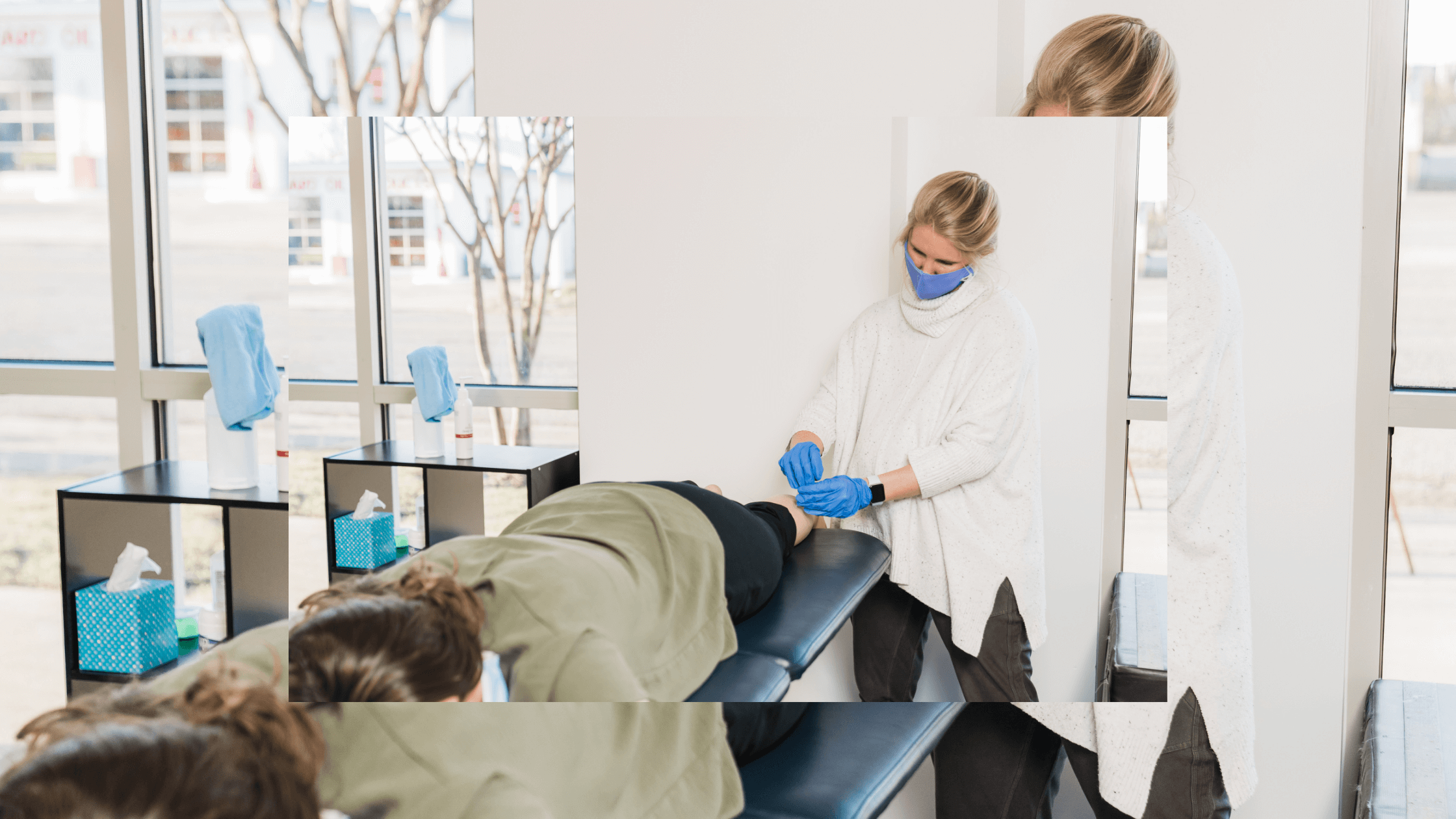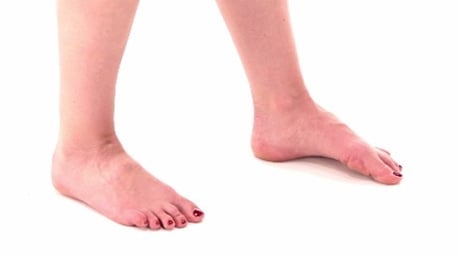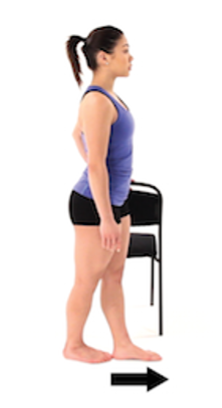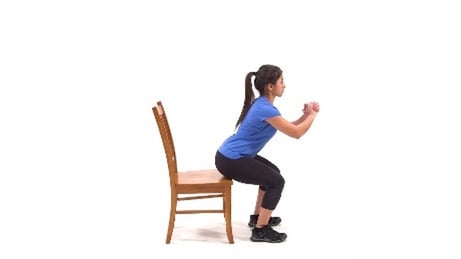What Is Neuropathy? How Physical Therapy Can Help

Licensed Physical Therapist PT, DPT // EW Motion Therapy Tuscaloosa
When you start experiencing nerve pain, numbness, or tingling, you probably have a lot of questions. You may start to wonder what is causing this issue and how it may affect your health down the road. If you go to your doctor for an appointment, they may diagnose you with some type of neuropathy. But what does this mean? What sort of treatment can you get to help your symptoms?
A diagnosis like neuropathy can come with many questions, and it is important to get them answered so you have a realistic timeline for your recovery. We see many neuropathy clients at EW Motion Therapy, and our physical therapists want to help you mobilize and strengthen muscles near the affected nerves. This is so we can help restore some of your prior movements, improve touch and feel, decrease numbness/tingling in affected areas, and get you back to doing the things you love to do safely and effectively. Even if you do not choose physical therapy with us, we still want to educate you on neuropathy and how physical therapy can be a good solution.
This article discusses the different types of neuropathy, how the condition can affect movement, and how physical therapy can help. With this information, you can begin your treatment with confidence.
What is neuropathy?
In its most basic terms, neuropathy (peripheral neuropathy) is a nerve condition that can affect your central and peripheral nervous systems. It most often causes numbness, tingling, weakness, or a loss of sensation in the hands and feet. Either a nerve or group of nerves has been damaged and/or become dysfunctional, and these changes in the nerve structure lead to changes and deficits in sensation as well as weakness in the affected area.
Different types of neuropathy
There are two methods for grouping the varying types of neuropathy: by the effect it has on the body or by the cause/origin of neuropathy present. When talking about the effects of neuropathy, there are three types: sensory, autonomic, and motor.
Sensory: pins & needles feeling, burning sensation, increased pain
Autonomic: rising blood pressure, rising heart rate, digestive issues
Motor: grasping, balancing, other motor dysfunctions
Sometimes your neuropathy can be present as a combination of two or three of these effects, depending on the origin. When we classify neuropathy by cause/origin, there are a few different types.
Diabetic neuropathy: This is the most common form of neuropathy, and can occur in Type 1 or Type 2 diabetes. This type causes painful sensations and alterations in touch/feel, most often in both hands and feet.
Trauma neuropathy: Often brought on by a traumatic injury to a limb or the trunk, like one of being crushed. Any soft tissue injuries that have nerves in the area can often be followed by nerve damage and a change in sensation.
Autoimmune neuropathy: This is the body’s fight response to a vaccine or illness, and it can attack the nervous system. Some people with autoimmune disorders such as lupus or rheumatoid arthritis can experience this, and if not treated properly, it can lead to an eventual loss of motor function.
Cancer: Some chemotherapy treatments can cause nerve damage.
Medications/alcohol: Exposure to and intake of harmful substances can cause neuropathy symptoms, especially something like nerve gas or chronic use/abuse of alcohol.
Genetic: Some neuropathy can be inherited.
Aside from these causes/origins of neuropathy, other causes can include vitamin or nutrient deficits and certain infections. It can be confusing to try to figure out the specific cause of your neuropathy, so it is essential that your doctor helps provide that information.
How does neuropathy affect movement?
Because neuropathy so often affects the feet, balance and gait issues are a hallmark of neuropathy. It is understandably difficult to stay steady on your feet when you cannot feel them, so many neuropathy patients use assistive devices like walkers or wheelchairs. Neuropathy patients are also at high risk for falling, or near-falls, which can lead to added stress for both the individual and their family.
Along with gross motor skills, neuropathy can also affect your fine motor skills if it is concentrated in your hands. You may find it more difficult to accomplish tasks you do every day, like buttoning your shirt or brushing your teeth.
How can physical therapy help?
When you see a physical therapist for neuropathy diagnosis/symptoms, they can address your movement deficits. During your first visit, they will do a full-body evaluation to create a personalized treatment plan for your needs. Your therapist will include a warm-up with general muscle activation and strengthening exercises, as well as gait and balance exercises to help regain some of your mobility. They will also help you activate muscles in areas where you have lost sensation, so you can maintain the health of the muscle tissue even while dealing with numbness, tingling, and/or pain.
Your therapist will also assign some exercises for you to do at home. Here are a few exercises our physical therapists have used with some of our neuropathy patients. If you want to try any of these yourself, make sure to do it safely, and check back with your doctor first.
Seated Arch Lifts: Begin sitting upright in a chair with your feet flat on the ground. Lift the arch of your foot, keeping your toes and heels in contact with the ground. Make sure to avoid gripping with your toes and do not press your ankles outward. 
Tandem Stance with Chair Support: Begin in a standing upright position holding onto a chair for support. Place one foot directly in front of the other so you are standing in a heel-to-toe position. Maintain your balance in this stance. Make sure to keep your back straight during the exercise.

Squatting with Chair Touch + Arch Activation: Begin in a standing upright position in front of a chair. Lower yourself into a squatting position, bending at your hips and knees, until you lightly touch the chair. Return to the starting position and repeat. Make sure to maintain your balance during the exercise and do not let your knees bend forward past your toes.

What else can cause nerve pain?
Now you know more about neuropathy and how it can affect your daily movement. When managing the effects of neuropathy, seeking the right medical treatment is always important. You should also incorporate exercises into your daily routine, and try to eat a healthy and nutritious diet to help manage the symptoms. This allows your body to better deal with your current condition and keeps it staying healthy overall. Also, various other conditions can cause nerve pain besides neuropathy, so it is important to visit your doctor to rule out any other possible causes before beginning treatment.
Nerve pain can become very frustrating, creating a barrier to doing the things you love. Seeing a physical therapist can be a great step toward helping you move better. Our physical therapists at EW Motion Therapy have seen many clients with nerve pain, and our goal is to help you pursue your favorite activities again while managing your symptoms. If you are interested in physical therapy with us, fill out the Request an Appointment form on our website, and someone from our staff will contact you within 48 hours with your next steps.

